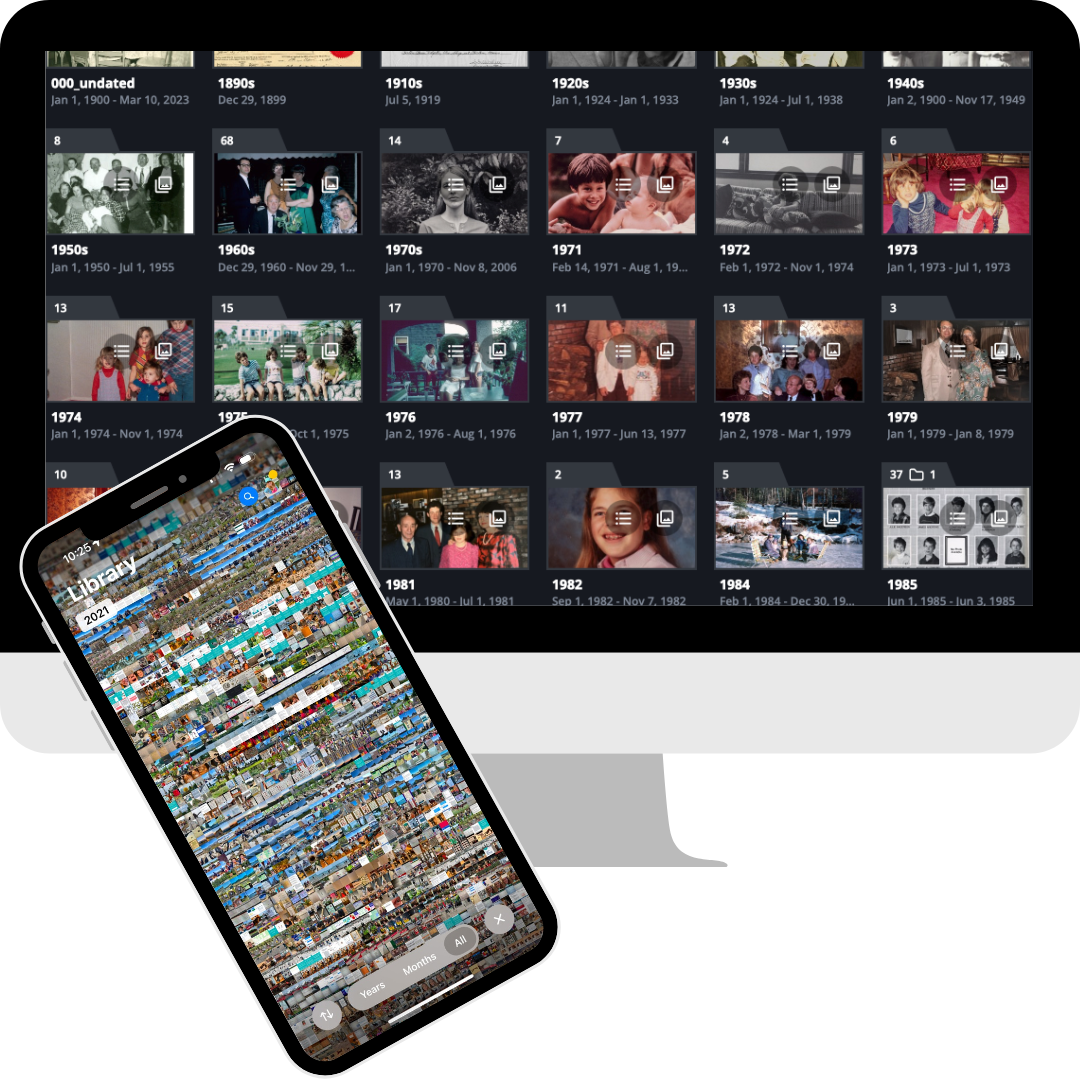Do you have a will for your photos?
**This is NOT a sponsored post but does contain affiliate links (marked by each product) that earn me a small commission if you purchase through the link.There is no additional cost to you but it does give my small business a tiny boost!
I have had the unfortunate experience of working with clients who need to recover a photo collection from a loved one that has passed - and guess what? Sometimes we can but sometimes we can’t. The clients who can’t recover a loved ones’ media are devastated.
Think for a moment what is in your photo collection. Your collection is the story of your life - both everyday and special events. It is your legacy and provides priceless memories. These are tangible assets that deserve a plan just like your bank accounts and property. For many, this is the most important asset they leave behind. I have been told by estate planners that often the photos are the asset about which loved ones are most concerned.
My photos are all in my phone, so no problem!
You may be thinking, my photos are all in my phone, so no problem! Here’s the problem. Can others get into your phone? Do they have your password? Are you sure you haven’t changed it? What if they have two-factor authentication turned on? What if your phone dies, then what?
Or you may be thinking, that’s why I uploaded my videos to YouTube, so they would be safe and accessible. Think again. I am currently working with a client who’s brother uploaded all of their old family films (converted reel film!) to YouTube. But he passed away suddenly and now no one has access, they are unrecoverable. They are gone.
Don’t let this happen to you.
There are simple steps you can take to ensure that your loved ones will have access to your photos and videos if something happens to you.
Make Your Wishes Known
If you have a digital collection this is fairly easy - think about who should get a copy, and who should be in charge of making sure this happens. With printed photos, albums and other media, decide who gets what. Better yet, take care of digitizing and converting the physical media now, so anyone you wish can have a copy.
Also decide on who will be in charge - the executor of your estate? Someone else? Write it down and make it clear either in your will or along with it.
Grant Access To Your Collection
Where is your photo collection? Make sure someone knows where the physical collection and digital collections are stored.
Keep a full copy on an external drive. The problem here, of course, is keeping it up to date. But an external drive generally is not reliant on passwords, so even if it’s not up to date it’s easy - you can just hand it over. Try to update it every 6 months or so, put a label on the outside of the drive, and make sure someone knows where it is.
With digital collections, it’s not enough to just say, “all my photos are in Apple.” Without passwords and in the age of two factor authentication, you need to set up your contact for success with all the information they need to access your collection.
The first step is designating someone to be in charge. The second step is to tell them where you store your photos and videos.
Let’s take a look at common photo storage systems, and how you can ensure they are accessible should something happen to you.
Apple Photos: Set up Recovery and Legacy Contacts and a Recovery Key
iPhones and iCloud have very good security. So good that if you don’t have the right information you cannot get in, and Apple will not help you. But with that security in mind, Apple also has a couple of ways you can ensure that a loved one that you trust can have access to the information you are storing on your phone and/or in iCloud. There are two ways to do this - you can set up a Recovery Contact and/or a Legacy Contact. They are similar in that they allow someone other than you to recover information from your iDevices; the big difference is that a Recovery Contact must have access to your iPhone, iPad or computer while a Legacy Contact does not. You can set up one or both, with one person or multiple people.
Recovery Contact
A Recovery Contact is a person that can help you get back into your iDevice if you have forgotten the password or get locked out by some other means. A recovery contact doesn’t actually have access to your account but can give you the information you need to get back into your account. I like this method because if you have that person’s iPhone along with your own, you’ll be able to get into that account without some of the hoops required of a Legacy Contact.
The Recovery Contact must have iOS 15 or greater, or on a Mac Monterey or greater, have two-factor authentication turned on, and be over the age of 13.
How to set it up: follow these instructions.
If you get locked out of your phone, the Recovery Contact will have a code that you can use to get back into it. Or if something happens to you, and your Recovery Contact has your phone, they will be able to get into it.
Make sure this is someone you trust.
Legacy Contact:
A Legacy Contact is someone that you designate to have access to your account after your death. Unlike a Recovery Contact, they do not need to have your phone or other iDevice, they can access via iCloud. But they will need to have been designated a Legacy Contact and a copy of your death certificate. When you designate a person (or many persons) as a Legacy Contact, you will generate a unique code that they will need to recover your data.
How to set it up: follow these instructions.
Recovery Key:
A Recovery Key is a 28 character secret code that will allow you to recover your account data, provided you also have access to a trusted phone number and and an Apple device. Two important notes:
When you set this up, it supercedes Apple’s standard account recovery process, and
you must have access to a trusted device or your Recovery Key will be required to reset your Apple Account password and sign in to your account if you ever lose access. If you lose both you are SOL.
If your only Apple device is an iPhone, you may not want to set up a Recovery because if you lose your phone and misplace your Recovery Key you will have a hard time getting back into your account.
How to set it up: follow these instructions.
Google Photos: Inactive Account Manager
Google does not have the equivalent of a Legacy Contact, but you can set up an Inactive Account Manager. In this case, a person you designate will receive a notification if your account has been inactive for a certain amount of time. You can choose what data you want to share with them. At some point after the account has been inactive, Google will send that person an email telling them what information you want them to have access to, and a link to download that information.
How to set it up: go to https://myaccount.google.com/inactive and follow the instructions.
Mylio: External Drives
Mylio does not have the equivalent of a legacy account manager. But if you store your data in Mylio, just make sure you label all of your external vaults with a sticker that says “[your name] photo collection”. That way it is clear what it is, and that drive will contain your entire collection, no special software or logins are necessary to access it. Add to your documents where you keep these drives. You can also connect important people right to your account by adding their devices and give them whatever access you choose. You can also easily give whoever you want access to all of your media on their own devices.
Forever: Account Manager
If you keep your important media in Forever.com, the process is a bit different. You can make sure that your trusted someone has the updated login information for your account - as of this writing Forever does not have two-factor authentication so if the trusted someone has your email and password they can access everything. Remember that if you change your password you’ll need to let them know. But you can also set up an Account Manager who can access your account without your password. This is important in case you change your password and forget to provide the new one.
Account Managers can access and work in your account at any time, although there are some limitations on what they can do. They can’t for example, delete any files from your account or place any orders.
How to set it up: follow these instructions.
Implement Your Plan
I hope this post has spurred you into action to create a plan for your digital estate, and has given you actionable ways to implement your plan. Your future you and your family will thank you.





